Published: July 28, 2024 | 7 mins read
The Deadly Struvite Stones
ARTICLE SHORTCUTS
- Struvite Stones Background
- Struvite Stone Causes
- Why Struvite Stones Form In Alkaline Urine
- Struvite Stone Diagnosis
- Treatment/ Prevention Strategies
If there’s one word that can describe how serious struvite stones are, it would be DEADLY.
That’s because, without treatment, people with struvite stones only have a 41% chance of survival in 15 years. Imagine that!Since struvite stones can be deadly, let’s provide some background in the next section.
Struvite Stones Background
Struvite, a crystal compound discovered in the 18th century, consists of magnesium ammonium phosphate (MgNH4PO4·6H2O). Now, struvite stones are included in the calcium phosphate family. They are also known as “infection stones” because they are caused by bacteria. We will discuss this further later, so make sure to stick around.
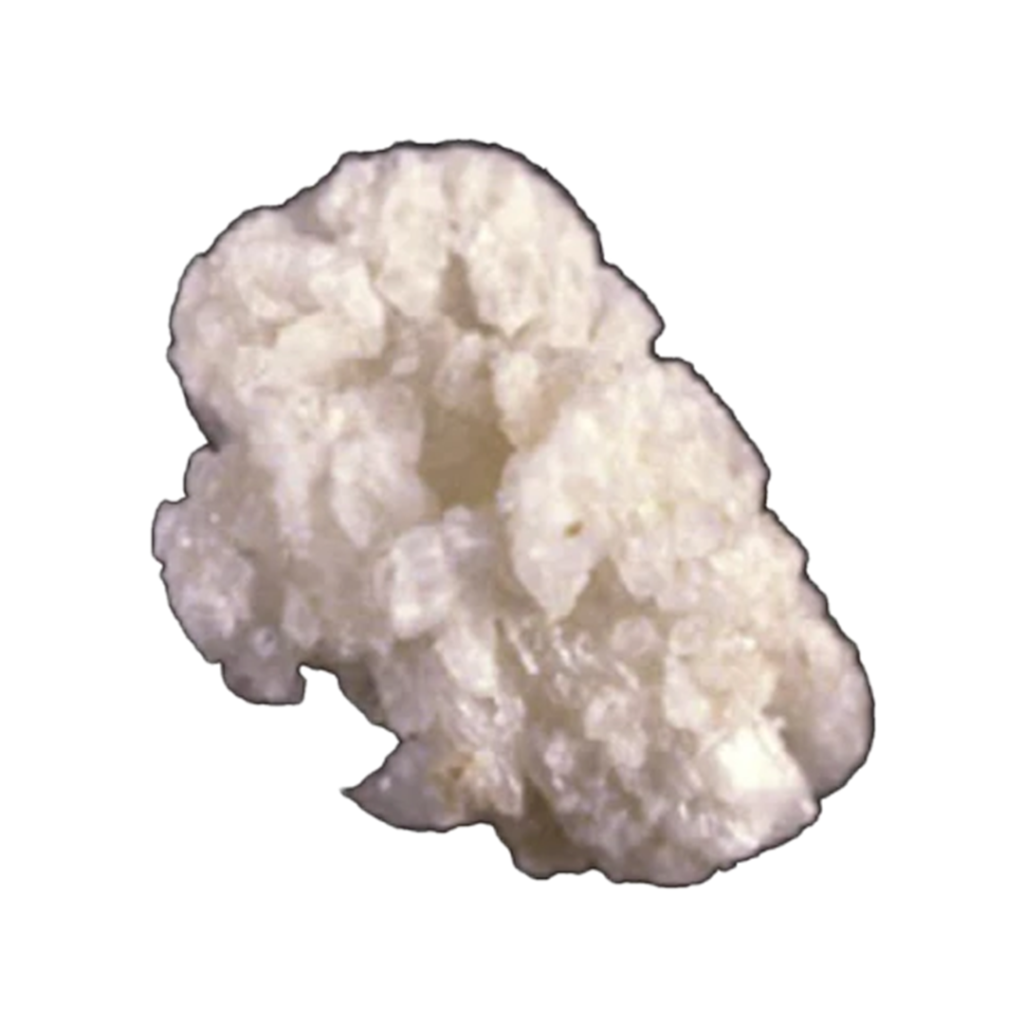
Struvite stones are like granola bars. They are typically a mix of struvite and calcium phosphate, commonly with carbonate ions (one carbon and three oxygen atoms). They contain three cations (calcium, magnesium, and ammonium) and one anion (phosphate). Therefore, they are also known as triple phosphate stones. Despite being called triple phosphate stones, pure struvite actually lacks calcium.
Modern tests show that human struvite stones are usually a mix of struvite and carbonate-apatite (phosphate minerals). They rarely contain calcium carbonate.
These infection stones make up about 15% to 20% of all kidney stone cases. They can develop independently or as a result of an infection caused by existing stones. Struvite stones are often found in the kidneys or bladder, but less frequently in the ureters. They have the tendency to become staghorn. It means they can grow quickly, fill a significant portion of the renal pelvis (where urine collects), and branch into the calyces (the small cup-like structures in the kidneys). Imagine dropping a lit candle on the carpet, and the house quickly catches fire! In the same way, infection stones grow quickly and pose more significant health risks, including sepsis and potential kidney failure, compared to other stone types.
Struvite stones are more common in women due to their higher susceptibility to urinary tract infections (UTIs). UTIs are closely linked to struvite stone formation. Among those who form struvite stones for the first time, women outnumber men by a ratio of 3:1.
Since we already know what a struvite stone is, let’s explore the list of bacteria that cause its formation.
Struvite Stone Causes
Urinary tract infections are the leading cause of struvite stone formation. However, not all bacteria cause struvite stones. We only need to look at those that produce urease. Urease is an enzyme that helps break down urea in the urine into ammonia and carbon dioxide. Here is a list of bacteria that cause struvite stones.
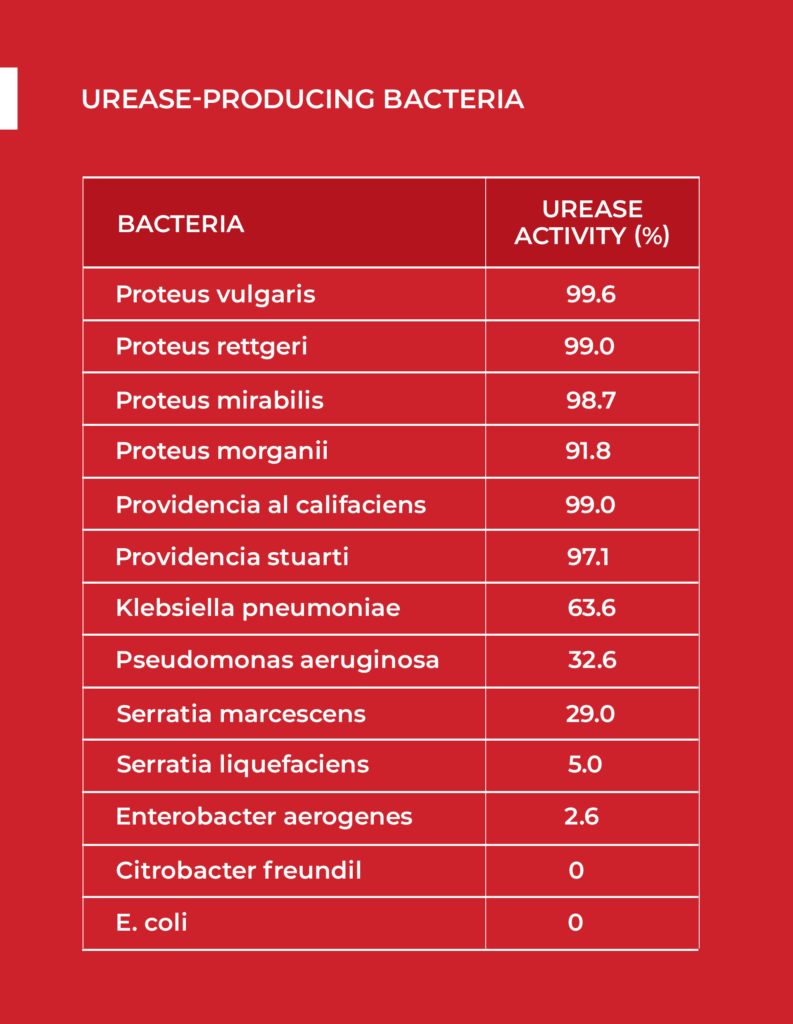
FACT: Did you know that struvite stones are common in dogs and cats? The bacteria that result in stone formation in our furry friends are Staphylococci and Proteus bacteria.
It’s essential to know that struvite stones only form in alkaline environments (pH >7). Acidic or neutral urine pH is not favorable for struvite stone formation.
Patients with struvite stones are less likely to have other metabolic abnormalities contributing to kidney stones than those with different types of stones. However, at least 50% will still show metabolic abnormalities when tested. The most common issues include high urinary calcium (hypercalciuria), low urinary citrate (hypocitraturia), and alkaline urine (pH >7).
Struvite stones may also form in the bladder. Bladder stones made of struvite often occur in people who use long-term urethral catheters or stents.
One curious question, though: Why do struvite stones only form in alkaline urine? The following section will explain in detail.
Why Struvite Stones Form In Alkaline Urine
According to researchers, struvite stones only form when urine becomes alkaline. This is due to the chemical reactions triggered by urease-producing bacteria, such as the Proteus species. These bacteria break down urea, a compound naturally found in urine, into ammonia and carbon dioxide. Ammonia is alkaline, which raises urine pH. When ammonia dissolves in water, it reacts with a hydrogen ion to become ammonium.
Increased urine pH promotes the precipitation of magnesium and phosphate ions. If these two ions are combined with ammonium, struvite crystals (magnesium ammonium phosphate) form.
If you are suffering from a urinary tract infection, how do you know precisely if you are forming struvite stones? The following section will give you the details.
Struvite Stone Diagnosis
Struvite crystals have a “coffin-lid” shape when viewed under a microscope. In laboratory experiments with urease-producing bacteria, these stones initially form as arrow-head shapes, then develop into X-shaped structures, and then finally take a “coffin-lid” shape on the third day.
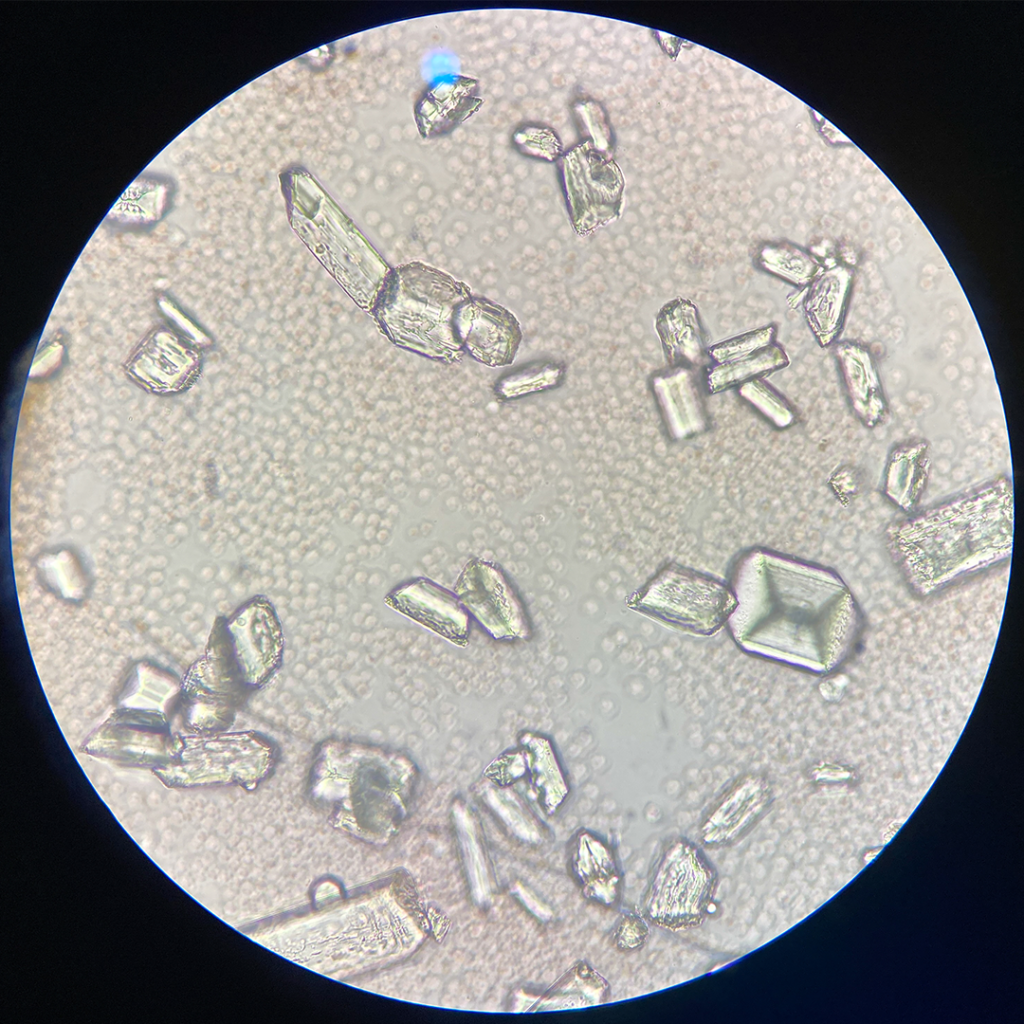
Conducting a urinalysis and urine culture is essential for diagnosis. Urinalysis often shows an alkaline pH (>7.2) and crystals shaped like “coffin lids.” Urine culture usually identifies bacteria that produce urease.
A non-contrast CT scan, which doesn’t require contrast dye (used to clearly picture body tissues), is considered the best method for diagnosing struvite stones, including large staghorn stones. On a CT scan, struvite stones can have a density range of 282.5 to less than 900 Hounsfield Units (HU).
When a CT scan isn’t available, ultrasonography and plain X-rays of the abdomen and pelvis can be used. Struvite stones usually appear on X-rays due to their calcium content.
Okay, it’s time to stop scaring ourselves with all the health threats struvite stones can bring. This time, let’s discover how we can prevent them.
Treatment/ Prevention Strategies
Joey has worked with several people over the last decade with this stone type. The bacteria that cause struvite stones are incredibly strong and easily become resistant to antibiotics! That means the enemy is quite formidable. Trying to destroy these bacteria is like fighting a heavily armed platoon with a water gun.
That’s why we do not recommend passing this stone type naturally. Patients with infected staghorn kidney stones who choose to skip surgical treatment face a 50% risk of kidney loss. The mortality rate is also high within five years at 25% and a 40% mortality rate within ten years. It is seriously deadly.
As much as we hate surgeries, you might need to undergo Percutaneous Nephrolithotomy (PCNL) in this case. Completely removing the stones through surgery is critical. As mentioned earlier, struvite stones grow quickly like a snowball. There’s also a risk of severe infections (sepsis).
Your doctor may also give you culture-specific antibiotics to kill the bacteria. Acetohydroxamic acid (AHA) is usually given to patients with stubborn urea-splitting infections. But again, remember that these bacteria quickly become resistant to antibiotics, so you cannot rely too much on drugs.
On the prevention side, slightly acidifying your urine towards neutral (around 6.0 pH) is essential. Many people mistakenly believe they’ve eradicated all bacteria after treatment, but these bacteria can lie dormant. If the urine becomes alkaline again, these bacteria can reactivate and lead to struvite stone formation. Therefore, keep your urine neutral through an animal-based diet.
Additionally, boosting your immune system through an animal-based diet helps the body fight off infections more effectively. It’s like having the whole army protecting your home. Exploring natural antibiotics, such as colostrum or Andrographis paniculata, can be beneficial as bacteria quickly become resistant to conventional antibiotics. Incorporating these preventive measures can significantly reduce the risk of recurrent struvite stones.
Lastly, if you are looking for more personalized advice to deal with struvite stones, we recommend you join our Coaching Program. For the last decade, Joey has been successfully helping struvite stone formers, and he will be able to help you, too.
Reference:
- Efficacy of Hounsfield Unit of CT in Prediction of the Chemical Composition of Urinary Stones
- Hounsfield unit density in the determination of urinary stone composition
- Struvite and Triple Phosphate Renal Calculi
- Struvite stones
- The comparative survey of Hounsfield units of stone composition in urolithiasis patientsUsefulness of hounsfield unit and density in the assessment and treatment of urinary stones
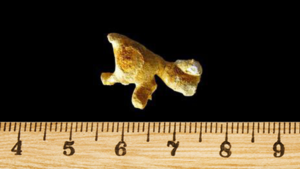
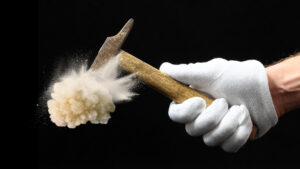
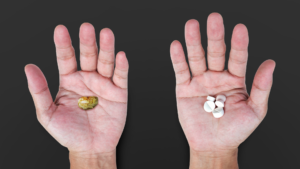

I have a staghorn stone but am not sure if its a struvite or not. at first I know that there is a stone so I tried drinking lemon to treat it, then I did a urine test and found that : PH=6.5 and there is a proteus mirabilis , I tried antibiotics for a week and then make the urine test again , the result was clean of infections and PH=6.5 .
is it struvite?
The staghorn was seen at the X ray and the CT but not in the ultrasound .
Is there any herbal way to break it instead of a surgery?
Hey Rola,
Thanks for reaching out.
I’m very sorry to hear that you’re facing a staghorn stone. They are exceptionally nasty to deal with, especially if they are made of struvite. But they are not always made of struvite.
Proteus mirabilis is typically associated with struvite stones. But, given your acidic urine pH, the two things don’t necessarily line up. Struvite (and most of the calcium phosphate family of stones) requires an alkaline urine pH (pH greater than 7.5).
Urine pH can swing wildly sometimes. From acidic to alkaline. But, this is pretty rare. So, it’s possible that you may have had a UTI that registered the bacteria while forming a calcium oxalate type of staghorn stone.
Without having any piece of the stone to test to be absolutely certain of the stone composition. We can look to the urine again for some hints.
Have you had a recent urinalysis performed since identifying the stone? If so, what were your calcium figures? This could help point to the stone material if its a calcium oxalate stone and whether we can attack it with herbs or not.
Please let us know!
I have a struvite staghorn kidney stone and I am scheduled for surgery on November 18, 2024. I have been looking into colostrum but it is very expensive. My urine has been pH 7. Just wondering if I should take colostrum when getting antibiotics in the hospital. How many days should I take it?
Hi Linda, thanks for reaching out! Very sorry to hear about your Struvite stone, though 🙁
When it comes to taking colostrum while receiving antibiotics has a canceling effect. Where the good that you’re putting in (colostrum) is getting killed by the antibiotics.
Does that make sense?